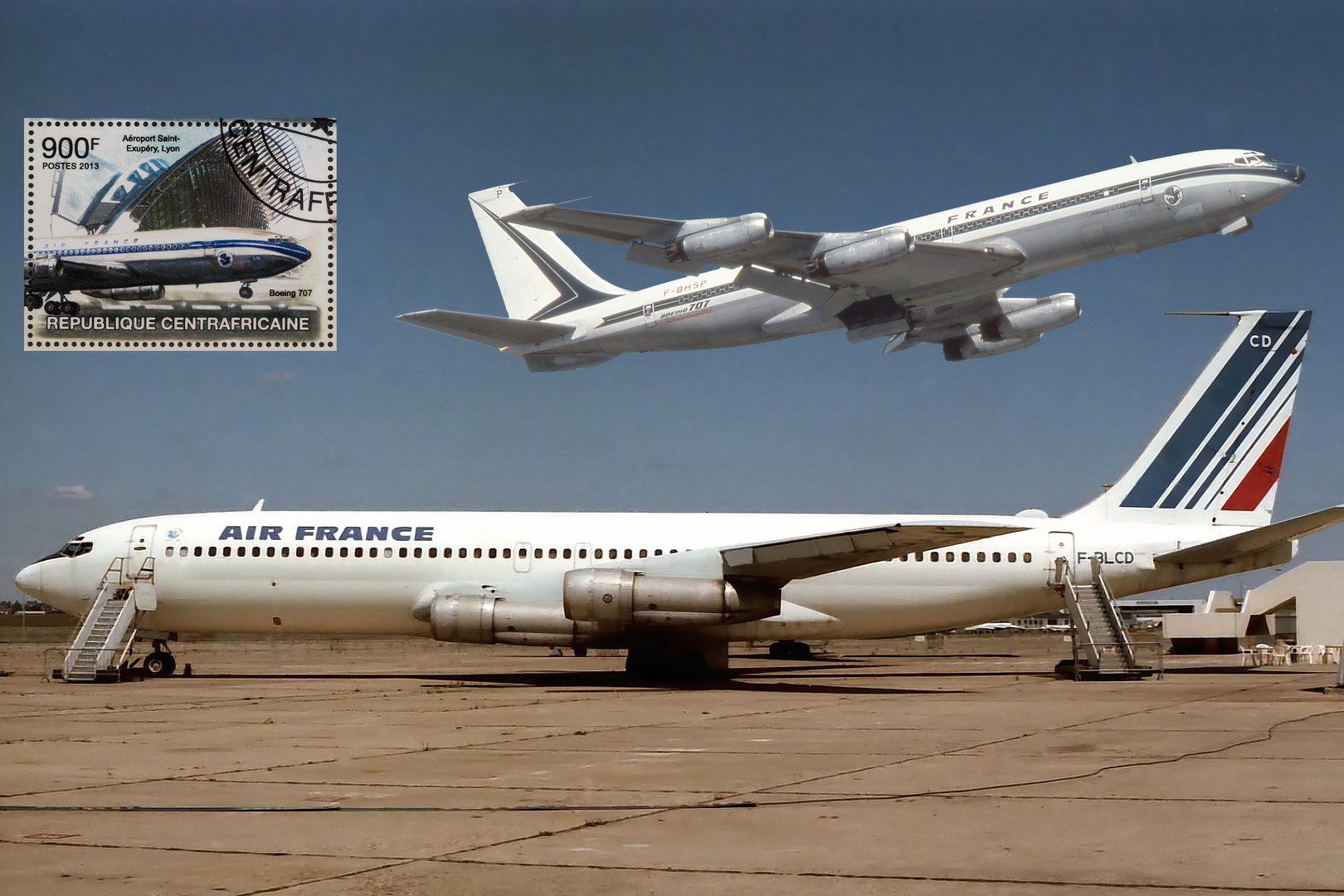
Summary The Boeing 707 replaced Air France's outdated fleet and cut flight times in half. Flying on the 707 was a luxurious and premium experience, akin to modern-day first-class travel. The 707 paved the way for modernization, leading to the order of more jets like the Caravelles and the legacy of the 747.
The Boeing 707 is the aircraft that propelled the American planemaker into the jet age; this long-range narrowbody airliner was one of the most famous early long-haul airframes. Air France was one of its leading operators; let's examine why the 707 played such an essential role within the airline's long-distance network. What was the role of the 707 in the fleet? The entry into service of Boeing's flagship product of the 50s was no small affair for the national airline of France; it was their first step into the jet age.

This meant offering quieter, smoother, and faster rides across the network. The role of the 707 was to replace the carrier's aging fleet of lockheed constellation and super constellation . The 707 almost halved the time needed to fly across the pond from 14 to 8 hours; this is almost as fast as modern-day jets, which take around seven hours to fly from Europe to the US and Canada's East Coast.
What was flying with Air France like back then? Flying on jet services in the 1950s resembled Concorde in the 1970s. It was considered a premium experience, even in economy class. Above is a selection of photos of the service in the 1950s and 1960s, with the 747 on the left-most side, the constellation in the middle, and the 707's economy class on the right-most.
The photos above may show cramped flights back then, but don't let that deceive you. It was nothing like today, with all passengers getting special treatment. According to Staff Travel Blog, flying was an event because it was a luxury.
Not only would the cabin crew wear haute-couture outfits, but passengers would also dress smart. The experience was like going to a gastronomic restaurant today, with men wearing their best suits and women wearing their most beautiful dresses. A leap into the jet age The 707 wasn't just a luxurious jetliner; it was Air France's first jetliner, and the airline was so satisfied with the new technology that it decided to order more jets.
This paved the way to modernizing the entire fleet, as, following the delivery and commercial success of the airliner, the carrier placed orders for Caravelles. The Caravelle would operate domestic and international short—and medium-haul flights, while the 707 would operate the long-haul network. The original Boeing jet also paved the way for its successor, an aircraft that would stay in the fleet for many decades, the Boeing 747 .
Air France operates almost all variants, from the -100, delivered in 1970, to the 747-400, which flew from 1991 to 2016. The ex-PanAm jet was stranded in Oostend in the 1990s while under the ownership of the Government of Benin. Some history about the 707 The introduction of the 707 jetliners marked a significant milestone in aviation history, leading to widespread developments in airport infrastructure, including terminals, runways, catering, baggage handling, and reservations systems.
Additionally, the success of the 707 jetliners prompted the enhancement of air traffic control systems to facilitate seamless coordination with military jet operations. The profound impact of the 707 jetliners sparked an era of innovation and progress, fundamentally transforming the aviation industry. The 707 and other jets that followed it pushed airport designers to adapt to the new technology.
Thus, when Charles de Gaulle Airport opened in 1974, during the height of the jet age, Terminal 1 was designed with large taxiways and gates arranged like a constellation around the main terminal. Each gate had direct access to the main taxiway, allowing aircraft to depart without the assistance of pushback tugs. This design helped to reduce turnaround times.
The gateway airport recently marked a landmark anniversary What did Air France operate before the 707? Air France flew long-haul well before the arrival of the 707 in its fleet. It operated a decent fleet of piston-powered aircraft, like the unique Breguet Deux-Ponts or the Lockheed lockheed constellation , otherwise known as "Connie." With Connie, a nonstop flight between Paris and New York took around 14 hours, similar to flights to Singapore today.
This means that it was inconvenient for people needing to make quick trips across the Atlantic. The piston-powered flights mainly competed against oceanliner boats, which took several days to cross the ocean. From 1933 until 1956, Air France had a fleet consisting solely of propeller aircraft; they would fulfill different missions within the fleet, with the constellation above being the flagship; they also had Vickers Viscounts and Douglas DC4s who would do short to medium-haul flights to Europe and North-Africa.
The future of the fleet We established that 707 played a crucial role in keeping the airline ahead of the competition by offering faster, quieter, and more efficient long-haul flights in the 1950s. It then gradually helped pave the way to a 100% jet-powered airline. The airline briefly mentioned turboprop usage, namely the Embraer 120 Brasilia, Fokker 70, and ATR.
Today, the airline continues to invest in advanced airplane technologies; it was one of the few airlines to operate the Airbus A380 and was France's first and only Boeing 787 operator. Aircraft Number in fleet A330 14 A320 (family) 67 A220 36 A350 35 787 10 777 63 It also led to the airline being one of few to still believe in flagships; the 707 was the flagship of the 1950s, the 747. From the '60s to the 00s, the 777 was the flagship of the 00s-20s, and today, the torch is being passed on to the A350.
.














